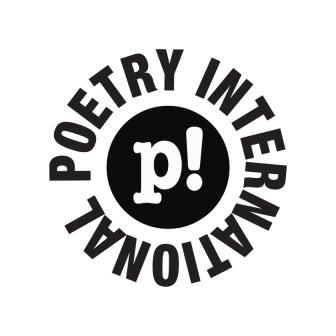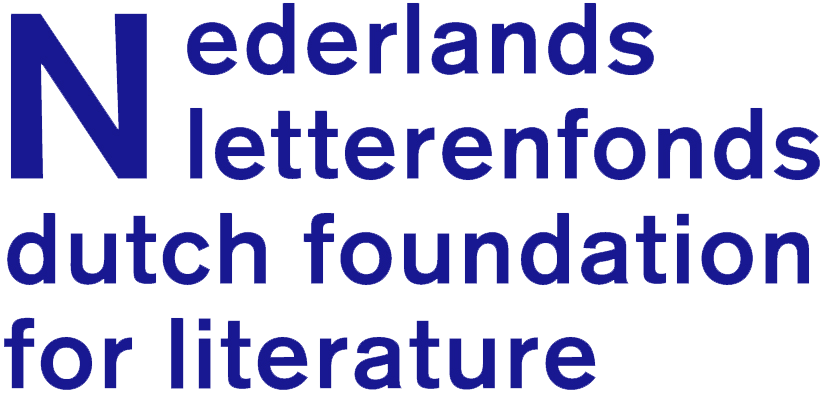Article
Global in Gangtok

August 01, 2006
AS: Would you offer a short overview of Nepali poetry in the past century? And how would you describe and assess the contemporary Nepali poetry scene?
Look at the face of any procession
I am there.
Look at the poster pasted on a wall
I am there.
AS: Do you think your location in Gangtok has played a role in your poetry?
From the picturesque capital of Sikkim, nestled among the lush mountains of the lower Himalayas, Rajendra Bhandari talks to Arundhathi Subramaniam about the local and the universal in his work - and the political anguish and alienation that have characterised so much Nepali poetry.
AS: How has your poetry journeyed in the course of three books? And would you like to say something about your forthcoming book?
RB: I have three collections of poems and one is shortly expected. They are: Hiundey yee chisa raatka pardeharuma (In the veils of cold wintry nights, 1979), Yee shabdaharu: Yee harafharu (These words: These lines, 1986) and Kshar/Akshar (Perishable / Imperishable, 1998). The first collection, Hiundey ye Chisa Raatka Pardaharuma, is a naïve expression of my adolescent emotionalism, but it foreshadows some strains of my later work. The themes are social, dealing with the difficult lives of the toiling masses, expressed in a lyrical cadence.
The second collection, Yee Shabdaharu: Yee harafharu, is inclined towards social, spiritual and universal themes. In this collection I have tried to rework the Japanese haiku, by introducing what I call three-line poems. I did not name them haiku, keeping in mind that Japanese is a tonal language and its three line – seventeen syllable code does not match with the demands of the Nepali language.
There is a long poem called ‘Mero Desh: Mero Ankhako Akasma Akasganga’ (My Country: The Milky Way in the Sky of my Eyes). A wide variety of situations and problems facing our country have been expressed in free-flowing lines, full of imagery. My penchant for exploring deeper spiritual truth is also reflected at various junctures. The spirituality – and I know it may not be appropriate to use this term – is expressed in very down-to-earth phraseology. Some such poems are ‘Is Someone Inside?’, ‘The Chrysanthemum danced out the Stormy Night’, ‘The Frontier-line’, ‘The Domain of Truth’.
My third collection marks my departure, both thematically and formally, from the earlier poems. I have tried to capture colloquialisms and a certain common parlance. The range of topics has been widened. The more common ones covered are local, regional, spiritual themes and the problem of alienation and relationships as well.
There is a long poem called ‘Mero Desh: Mero Ankhako Akasma Akasganga’ (My Country: The Milky Way in the Sky of my Eyes). A wide variety of situations and problems facing our country have been expressed in free-flowing lines, full of imagery. My penchant for exploring deeper spiritual truth is also reflected at various junctures. The spirituality – and I know it may not be appropriate to use this term – is expressed in very down-to-earth phraseology. Some such poems are ‘Is Someone Inside?’, ‘The Chrysanthemum danced out the Stormy Night’, ‘The Frontier-line’, ‘The Domain of Truth’.
My third collection marks my departure, both thematically and formally, from the earlier poems. I have tried to capture colloquialisms and a certain common parlance. The range of topics has been widened. The more common ones covered are local, regional, spiritual themes and the problem of alienation and relationships as well.
My poetry expresses a love of life in its widest sense, the life of everything that exists on this planet. Through our lives and our art, I believe we can touch a universal life which is in a state of flux and is ever-vibrant.
Regarding the form, I ought to say that I am averse to ground-breaking experimentation. My poetry lives in its content and the content dictates the form. This is my modus operandi.
My next collection will be focused on the themes like globalization, the widening gap between the haves and have-nots, deteriorating bureaucracy, the plight of the common people. The mode of presentation will be more satirical and direct. I have searched for a core poem, powerful and independent enough to stand in its barest form without the help of much ornamentation.
AS: Would you offer a short overview of Nepali poetry in the past century? And how would you describe and assess the contemporary Nepali poetry scene?
RB: The outstanding trends of Nepali poetry in the past century have been classicism, romanticism, realism, surrealism, cubism, existentialism, Freudianism, neo-romanticism etc. The Nepali poems have seen forms that are classically metrical, lyrical, ghazal, haiku, cubist or three-dimensional, impressionistic, stream of consciousness, symbolic, imagist, Dadaist. Folklore and mythology have played a great role in constituting the landscape of images in Nepali poetry.
The pioneer Nepali poet is Bhanubhakta. His Ramayana and other works were published in the later part of the eighteenth century. A host of devotional poets formed the foundation of Nepali poetry in the 18th and the 19th centuries. Many poets wrote about the war-heroes too. With Motiram Bhatta (1866), Nepali poetry entered into new area of love, eroticism, ghazal and nature-worship.
The pioneer Nepali poet is Bhanubhakta. His Ramayana and other works were published in the later part of the eighteenth century. A host of devotional poets formed the foundation of Nepali poetry in the 18th and the 19th centuries. Many poets wrote about the war-heroes too. With Motiram Bhatta (1866), Nepali poetry entered into new area of love, eroticism, ghazal and nature-worship.
Tirthaprasad Acharya, Kedarnath Khatiwada, Tulshi Dutta Bhattarai, Pahalman Singh Swar, Shambhu Prasad Dhungel, Laxmidutta Panta are a few among this lot, who widened the sphere of Nepali poetry.
Breaking away from love and eroticism, Lekhnath Poudyal (1884) founded the new ground of philosophical and moralistic writing. He discovered a new idiom and diction in poetry. The pure, lyrical and mature language is the additional high point of his poetry. His Buddivinod, Ritubichar, Tarun Tapasi are timeless creations in Nepali poetry. Among his contemporaries, Dharanidhar Koirala, Mahananda Sapkota, Rudra Prasad Dhakal have contributed a great deal.
Nepali poetry entered into modernity during the early twentieth century. Laxmiprasad Devakota, as the central figure, led Nepali poetry to new heights with his innumerable collections. Muna Madan, Raj Kumar Prabhakar, Shakuntal, Kunjini, Haharana Pratap, Luni, Laxmi Kabita Sangraha are a few of his masterpieces. Romanticism took firm root and reached the peak with his writings. Circling around him were writers like Jagat Rai, Daan Khaling, Siddicharan Shrestha, Virendra Subba, Okiuyama Guyu, Agam Singh Giri, Narendra Prasad Kumai.
The poets from Darjeeling, Sikkim, Dooars, Assam and Meghalaya paid a great deal of attention to social problems. Agam Singh Giri was the pioneer of this socially inclined lot. He was immediately succeeded by Haribhakta Katuwal of Assam, to be followed by a host of others.
A facet of Nepali poetry worth mentioning is the theme of political insecurity. Giri is intensely concerned with the economic, cultural and political conditions of the Gorkhas in India.
The Gorkhas of Indian origin, who number several lakhs, are bona fide Indians, like any other Indian citizen. Many had become martyrs during the Indian Freedom struggle. Durga Malla, Dal Bahadur Giri, Jangabir Sapkota, Sabitri Thapa, Indreni Thapa are just a few names among these. Ram Singh Thakuri, an active bandmaster of Azad Hindu Fauj, was the music composer of the National Anthem of India. There have been occasions when Indian Gorkhas were dubbed foreigners even by the top-ranking politicians. This has anguished many poets. This anguish can be discerned in the poems of Guman Singh Chamling, Buddha Kumar Moktan, Hari Bhakta Katuwal, Aarati Rai, Khadga Singh Kaura, Sharad Chhetri, Jas Yonzon Pyasi, Bikas Gotamey and Mohan Thakuri.
In the 1960s, a literary movement called ‘Ayamic’ or ‘Third Dimensional Writing’ was launched by the three literary stalwarts Indra Bahadur Rai, Ishwarballav and Bairagi Kaila. The chief aim of this movement was to express firsthand experience without any secondary thought or reflection intruding between the act of experiencing and writing. They borrowed the techniques of cubist painting. They used archetypal images, myths, stream of consciousness. Their aim was to express human experience in its entirety.
In the 1960s, a literary movement called ‘Ayamic’ or ‘Third Dimensional Writing’ was launched by the three literary stalwarts Indra Bahadur Rai, Ishwarballav and Bairagi Kaila. The chief aim of this movement was to express firsthand experience without any secondary thought or reflection intruding between the act of experiencing and writing. They borrowed the techniques of cubist painting. They used archetypal images, myths, stream of consciousness. Their aim was to express human experience in its entirety.
The 1970s saw an upsurge of internationalism, an urge for world peace, a craving for humanity, pangs of alienation, in the poems of Mana Prasad Subba, Girmi Shepra, Kewal Chandra Lama, Kiran Rai, Sobhit Rai and Norjang Syangden.
Of late, Nepali poetry has once again become down-to-earth, simple, people-oriented, lucid and direct. The names of Norjang Syangden, Rajendra Bhandari, B. Yonzon, Nawa Sapkota, Jus Yonzon Pyasi, Prabin Rai Jumeli, Gyanendra Khatiwada especially deserve mention. B. Yonzon is a sharp-edged satirist. He targets ruthlessness and the highhandedness of rich people, while Jus Yonzon abhors hypocrisy and suppression in any form. These poets have a deep sense of sorrow, but they cannot be labelled romantics. Rather they can be called neo-romantics and progressive. Norjang says:
If at all I am rememberedLook at the face of any procession
I am there.
Look at the poster pasted on a wall
I am there.
Love, conjugal or otherwise, has been one of the dominant themes of Nepali poetry. Abinash Shrestha and Padam Chhetri have exhibited various dimensions of love while Rajendra Bhandari, Udai Thulung and Kewal Chandra Lama have gone beyond sensuous love and explored the theme of timeless or eternal love.
Despite the difficulties of publication and distribution, the Nepali literary scenario still looks vibrant. The young breed of poets has abandoned the complex form of the 1970s and 1980s. They are once again minded to respond to the call of the times; they are attuned to society. The suffering of an average man is finding its place in the new poetry. The poems have become earthy, intimate and warm. Verbal jugglery and over-experimentation in form are receding into the background. A transparent, direct and colloquial writing is being sought. Despite the frightening onslaught of electronic and print media, the overall picture of Nepali poetry is positive.
AS: What are the various cultural and literary influences that have shaped your poetics?
AS: What are the various cultural and literary influences that have shaped your poetics?
RB: Born to a rural Brahmin family, I remember my childhood being overburdened with domestic work, poverty deaths, misery, frustration, humiliation etc. My craft took root in the midst of a tradition-bound ethos and poverty-ridden domestic reality. My poems mostly revolve around the problems of the masses, nature, national socio-political realities, and the underlying dream of a timeless spiritual bliss. The low literacy rate, cumbersome mountain-life, poverty, unemployment, lack of basic amenities – like water, health infrastructure – have contributed greatly towards my poetry.
Among the Nepali poets, I am deeply touched by the poems of Ishwarballav, Mohan Koirala and Bhupi Sherchan. Hindi poets, Dhumil, Muktibodh, Raj Kamal Chowdhury, Shamsher have also left an indelible impact on me, while I am a great admirer of the Indian English poets, Jayanta Mahapatra, Keki N. Daruwala, Ranjit Hoskote and Nissim Ezekiel. I am also an all-time admirer of poets like Aimé Cesaire, Wole Soyinka, Octavio Paz, Pablo Neruda and Derek Walcott.
AS: Do you think your location in Gangtok has played a role in your poetry?
RB: I am based in Gangtok which is in the lap of the snow-clad mountain ranges of the Himalayas, including the Kanchenjunga. I was born in Darjeeling, and I have lived in Gangtok for the last thirty years. The lush mountains of Sikkim and Darjeeling are dear to my heart.
Culturally, Sikkim and Darjeeling are one single unit. Politically, Sikkim has a different identity. Since the merger with the Indian Union in 1975, Sikkim has been witness to the development process. Even the distant villages are linked with motorable roads. Medical and electricity facility are available in every nook and corner of the state. The population is nearing the figure of six lakhs [hundred thousand, ed.].
The quality of life and education are still lagging behind, however. Unemployment is slowly creeping into the state. Darjeeling has been facing bitter political turmoil since the 1980s, when the movement for a separate state was launched. It miscarried and the Darjeeling Gorkha Hill Council was thrust upon the people in the name of a political settlement. The Gorkhas of Darjeeling and Dooars are always facing the internal imperialism of West Bengal. Sikkim is deeply affected by the agitation of Darjeeling.
The poems of the 1980s and 1990s bear the mark of this political anguish. Historically, Darjeeling was never a part of Bengal and the people’s desire for preserving their tradition, language and ethnicity in a separate homeland inside India, has been a long-standing one. Sikkim has shown sympathy for this cause time and again. The element of alienation in our poetry has its roots in this political problem. These situations have played an enormous role in my poetry.
July 2006
Also on this site:July 2006
Rajendra Bhandari
Welcome to Indian Poetry - September 2006
Poems:
From the Market
Some Questions from the Annual Examinations
The Expanding Universe
Father and My Birthday
Time Does Not Pass
© Arundhathi Subramaniam
Sponsors





Partners
LantarenVenster – Verhalenhuis Belvédère

